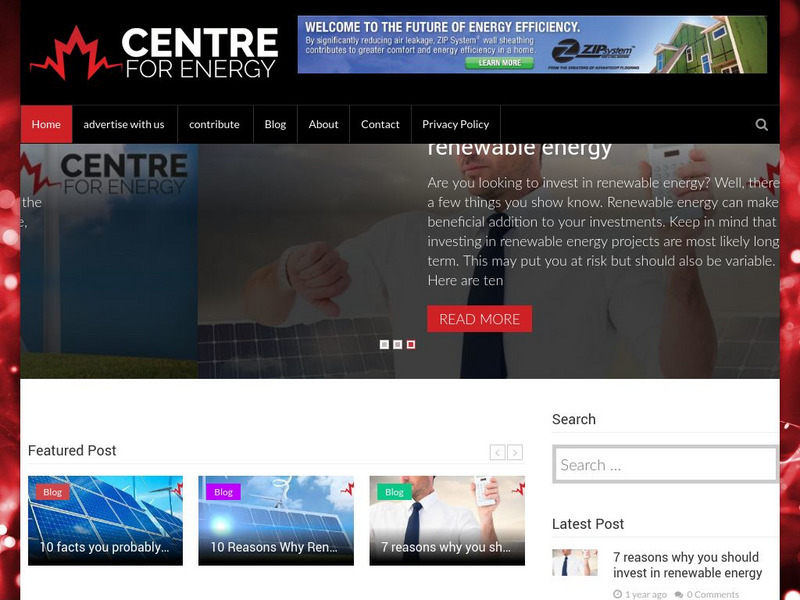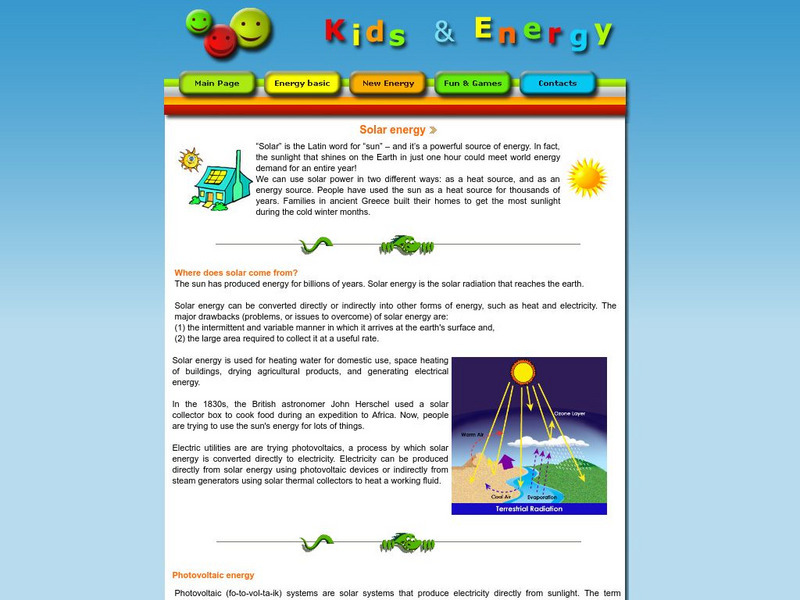It's About Time
Renewable Energy Sources - Solar and Wind
There has been a huge solar energy spill! Let's go outside to play in it. This lesson includes multiple experiments showcasing solar and wind energies. Scholars build a solar heater and an anemometer before testing the results. The...
Teach Engineering
Concentrated Solar Power
The seventh segment in an eight-part unit promotes the idea of concentrating the sun to increase the power of a photovoltaic panel. Pupils learn about devices used such as reflectors or lenses.
Teach Engineering
Solar Angles and Tracking Systems
The sun will continue to rise in the east and set in the west, no matter what. The first lesson in a series of eight introduces the class to solar angles. It makes connections between a person's latitude and the angle of position of the...
Teach Engineering
The Temperature Effect
How temperature affects the efficiency of a solar panel is the focus of the third in a series of eight resources that presents how engineers are able to control the temperatures of photovoltaic panels. Class members find out how the...
Weber State University
The Sun and the Seasons
Why is there more daylight in June than in December if you live above the equator? How does the angle of sunlight shift throughout the year? Answer these questions and more with an interactive article about the sun, its path through the...
Teach Engineering
Maximum Power Point
Investigate the maximum power output of a photovoltaic panel with a lesson that introduces the class to the maximum power point. Individuals learn how to determine the maximum power point of a solar panel by using Ohm's law and the power...
Teach Engineering
Ice, Ice, PV!
Knowing the temperature coefficient allows for the calculation of voltage output at any temperature. Groups conduct an experiment to determine the effects of temperature on the power output of a solar panel. The teams alter the...
National Institute of Open Schooling
p-Block Elements and Their Compounds – II
Ozone, made of three bonded oxygen atoms, is found 15-30 km above Earth, has a strong smell, is blue, and blocks sunlight from hitting the surface of Earth. The 22nd lesson in a series of 36 specifically focuses on the important elements...
Brooklyn Children’s Museum
Inside India
What can a Ganesh statue, hand ornament, and print block tell you about India? Introduce your learners to the geography, history, and culture of India by analyzing primary sources and using the well-designed worksheets provided in this...
It's About Time
Photosynthesis, Respiration, and the Carbon Cycle
Provide your class with the opportunity to view our carbon cycle close up. Young scientists research the cycle of oxygen as it completes the tasks of photosynthesis and respiration. They explore the importance of carbon in an ecosystem...
International Technology Education Association
Pixel This!
Did the image I drew match the image you saw? By simulating a satellite and a ground station, teams of two transmit data in the form of pixels in order to recreate an image. They use four different levels of brightness, creating slightly...
National Heart Association
Cold Weather Fitness Guide
Don't sacrifice physical activity every time cold winter weather arrives. From walking or circuit training to warm, healthy recipes and safety reminders, this resource will help encourage learners to prioritize their fitness and stay...
Encyclopedia of Earth
Encyclopedia of Earth: Energy: Solar Power
Explains what solar power is, how it is produced, its limitations as an alternative energy source, environmental issues, the importance of analyzing solar power systems on an ongoing basis, and geographical considerations. (Published:...
US Department of Energy
U.s. Department of Energy: Energy Basics: Renewable Energy: Solar Energy
Find out about renewable energy resources using solar energy technologies. Learn about the use of photovoltaic cells and the capture of the sun's energy.
Energy4Me
Energy4me: Solar Energy
Learn about the history of solar energy, and how the energy is converted into usable electricity.
American Geosciences Institute
American Geosciences Institute: Solar Energy: Background
A reference page on solar energy. Learn about solar energy, solar heating, solar radiation, and electromagnetic radiation. The page also describes the advantages and disadvantages to solar energy.
Other
Canadian Centre for Energy Information: What Is Solar Energy?
Solar energy is explained well in this module, from its history and how it is produced, to its advantages and disadvantages, and what the future holds for this energy source.
Energy for Sustainable Development
Esd Bulgaria: Kids & Energy: Solar Energy
Explains what solar energy is, how it differs from photovoltaic energy, and how it is harnessed to produce electric power for humans.
State Energy Conservation Office-Texas
State Energy Conservation Office: Passive Solar Design for Homes [Pdf]
Discusses different features that can be incorporated into a home's design in order to harness solar energy.
State Energy Conservation Office-Texas
State Energy Conservation Office: Electricity From the Sun [Pdf]
Discusses forms of renewable energy that rely on the sun. For example, wind is created when solar energy heats the air, and biomass is solar energy that has been stored in plants.
State Energy Conservation Office-Texas
State Energy Conservation Office: Feasibility of Photovoltaic Systems [Pdf]
Summarizes how a photovoltaic or PV system works to convert solar energy into electricity. Explains how to estimate what size of PV system is needed and what the cost would be, and provides a worksheet with formulas for calculating...
State Energy Conservation Office-Texas
State Energy Conservation Office: Learning About Photovoltaic Systems [Pdf]
Explains how photovoltaic systems work and how Texas homeowners are using them. Discusses how a homeowner can use solar energy and still be on the electricity grid system.
Encyclopedia of Earth
Encyclopedia of Earth: Solar Radiation
Almost all of the energy that drives the various systems (climate systems, ecosystems, hydrologic systems, etc.) found on the Earth originates from the sun. Solar energy is created at the core of the sun when hydrogen atoms are fused...
eSchool Today
E School Today: Renewable Energy Sources
Learn what renewable energy is, the different types, and why it's important to conserve energy.
Other popular searches
- Solar and Wind Energy
- Solar System Powerpoint
- Solar Electric Power
- Solar Powered Cars
- Solar System Power Point


















![State Energy Conservation Office: Passive Solar Design for Homes [Pdf] Handout State Energy Conservation Office: Passive Solar Design for Homes [Pdf] Handout](https://d15y2dacu3jp90.cloudfront.net/images/attachment_defaults/resource/large/FPO-knovation.png)

